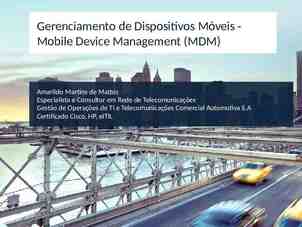Collaborations in Artificial Intelligence and Geosciences (CAIG)
20 Slides2.30 MB
Collaborations in Artificial Intelligence and Geosciences (CAIG) January 22, 2024 Program solicitation NSF 24-518 Proposal deadline (due 5 p.m. submitter’s local time): March 15, 2024 Raleigh Martin (GEO/RISE) Marlon Pierce, Alejandro Suarez (CISE/OAC) Sylvia Spengler (CISE/IIS) Jodi Mead (MPS/DMS) Eva Zanzerkia (GEO/EAR) Marc Stieglitz (GEO/OPP) Maria Womack, Eric DeWeaver (GEO/AGS) Sean Kennan, Joe Carlin (GEO/OCE)
WEBINAR LOGISTICS Webinar (including Q&A) will be recorded and posted on the CAIG program page: https://new.nsf.gov/funding/opportunities/collaborations-artificial-intelligence-geosc iences Following the presentation, time will be provided for general Q&A (next slide) Proposal-specific questions may be directed to Program Contacts listed on the CAIG program page WEBINAR LOGISTICS 2 PROGRAM OVERVIEW 4 PROPOSAL PREPARATION OTHER CONSIDERATIONS 11 18 2
Zoom Webinar Set-up All attendees are muted and webcams are disabled. To enable live transcript, click on the To ask a question, please use the feature. feature. You may submit questions at any time. You may send questions anonymously: 3
PROGRAM OVERVIEW Topics to be covered: Motivation Priorities for CAIG Scientific scope of CAIG Relation to other opportunities NDC-C and NAIRR WEBINAR LOGISTICS 2 PROGRAM OVERVIEW 4 PROPOSAL PREPARATION OTHER CONSIDERATIONS 11 17 4
Motivation “Artificial Intelligence (AI) is intelligence that comes from any computational tool, including logic and decision trees. AI approaches include machine learning (ML) methods that use optimization and statistical techniques to enable machines to perform tasks and make discoveries after exposure Harnessing the increasing use of innovative AI approaches in the geosciences Building technical and human capacity for the use of advanced AI methods in geosciences research National Artificial Intelligenc e Research Resource (NAIRR) Task Force, 2023 National Academies of Science, Engineering, and Medicine, 2022 5
Priorities for CAIG Advance innovative use and application of AI techniques to achieve geosciences research breakthroughs Expand access to data and computation for AI-driven geosciences research Build workforce capacity for using advanced AI methods through educational and broadening participation activities 6
Scientific scope of CAIG “Geosciences” refers to the academic research communities supported by the Geosciences Directorate (GEO) at NSF, which includes the domains of atmospheric and geospace sciences, ocean sciences, Earth sciences, and polar sciences Directorate for Geosciences (GEO) Research, Innovation, Synergies, and Education (RISE) Atmospheric and Geospace Sciences (AGS) Earth Sciences (EAR) Ocean Science s (OCE) Polar Program s (OPP) Further details on the scientific topics that are supported in the geosciences can be found within descriptions of individual GEO programs ( https://www.nsf.gov/funding/programs.jsp?org GEO) 7
Relation to other opportunities Applications of existing AI methods to geoscience questions Disciplinary science programs within GEO Foundational AI research that uses geoscience applications or datasets only for testing purposes https:// www.nsf.gov/geo/ geo-ci/ Programs within CISE/IIS or MPS/DMS New CI for AI-driven research Cyberinfrastructure for Sustained Scientific Innovation (CSSI) or related programs in CISE/OAC Improving CI literacy and skills development Training-based Workforce Development for Advanced Cyberinfrastructure (CyberTraining) program 8
National Discovery Cloud for Climate (NDC-C) Dear Colleague Letter (DCL): National Discovery Cloud for Climate Opportunities (NSF 24-024) Encourages proposals for pilot projects to develop an integrated national-scale cyberinfrastructure to support endto-end climate research and education CAIG is not listed on the DCL, nonetheless, appropriate proposals responsive to NDC-C goals are encouraged to identify this: Include “National Discovery Cloud for Climate” as a keyword at the end of the Overview section of the Project Summary Include a description of the relevance of the proposed work to NDC-C goals for climate research-centric utilization of cyberinfrastructure (CI) in the Project Description section of the proposal 9
National AI Research Resource (NAIRR) October 30, 2023 Expected by January 28, 2024 “The program shall pursue the infrastructure, governance mechanisms, and user interfaces to pilot an initial integration of distributed computational, data, model, and training resources to be made available to the research community in support of AI-related research and development.” Proposers are encouraged to utilize resources through the pilot NAIRR. An initial announcement on this is expected soon. National Artificial Intelligenc e Research Resource (NAIRR) Task Force, 2023 10
PROPOSAL PREPARATION Topics to be covered: General preparation instructions Submission eligibility Merit review criteria Leveraging shared computing Other supplementary documents WEBINAR LOGISTICS 2 PROGRAM OVERVIEW 4 PROPOSAL PREPARATION OTHER CONSIDERATIONS 12 17 11
General preparation instructions Title: Please note that titles should be proceeded with “CAIG: ” Project Summary: Include keywords “HTCAccess” and/or “CloudAccess” if such resources are requested, and/or “National Discovery Cloud for Climate” if responding to this opportunity. Project Description: Include separate section(s) with text describing how the proposal meets the three Specific Requirements Budget: There is no specific limit, but please keep in mind the following: Projects may be up to 3 years in duration. NSF expects to fund 10-15 projects with anticipated 6,000,000 to 10,000,000 in available funding Awards are expected to fund interdisciplinary teams of 2-3 lead collaborating Senior Personnel and associated students, postdoctoral researchers, research software engineers, and/or similar staff. 12
CAIG submission eligibility Eligible organizations to submit proposals: Institutions of Higher Education (IHEs) Non-profit, non-academic organizations Other Federal Agencies and Federally Funded Research and Development Centers (FFRDCs): Must contact a Cognizant Program Officer prior to proposal preparation Other organizations may be involved via unfunded collaboration, subaward, or consulting arrangements Senior personnel limits: An individual may be designated as Senior Personnel (which includes but is not limited to PI or co-PI) on at most two proposals. NSF's definition for "Senior Personnel" is provided in PAPPG Exhibit II-3 13
Merit review criteria Standard criteria: Broader Impacts: The potential to benefit society and contribute to the achievement of specific, desired societal outcomes Intellectual Merit: The potential to advance knowledge Solicitation-specific criteria (see “Specific Requirements” in Program Description): Geosciences Advancement: How do the proposed activities contribute to advancing geosciences research and/or education in response to motivating science drivers? AI Impact: What novel integration of AI is proposed and does it overcome significant methodological and/or capacity bottlenecks that inhibit research progress in the geosciences? Partnerships: Does the proposal include mechanisms to develop meaningful interdisciplinary partnerships to support the intended Geosciences Advancement and AI Impact? Will partnerships benefit all project participants, including pathways for crosstraining students and other researchers in the methods to be pursued? 14
Leveraging NSF-supported shared computing The solicitation does not support substantial cyberinfrastructure (CI) development; instead, proposers may consider using existing resources: Advanced computing support available via the ACCESS (Advanced Cyberinfrastructure Coordination Ecosystem: Services & Support) program - https://access-ci.org/ High-Throughput Computing (HTC) resources available via the PATh (Partnership to Advance Throughput Computing) project https://path-cc.io/ See Proposal Preparation Instructions in solicitation Commercial cloud computing resources available via CloudBank Cloud Access - https://www.cloudbank.org/faq See Proposal Preparation Instructions in solicitation 15
Other supplementary documents 1. High-Throughput Computing Resources (if applicable): Required if requesting HTC resources 2. Cloud Computing Resources (if applicable): Required if request cloud credits through CloudBank. The cost of cloud credits should not be included in the main proposal budget. 3. Letters of Collaboration (if applicable): These are encouraged to demonstrate collaborative arrangements 16
OTHER CONSIDERATIONS Topics to be covered: Future plans for CAIG Resources for proposers Q&A session WEBINAR LOGISTICS 2 PROGRAM OVERVIEW 4 PROPOSAL PREPARATION OTHER CONSIDERATIONS 11 17 17
Future plans for CAIG This program solicitation announces an initial 2024 competition for Collaborations in Artificial Intelligence and Geosciences (CAIG) proposals. Outcomes of this initial competition, including early results from funded projects, will inform possible future funding opportunities for CAIG. However, no specific plans for future competition As always, NSF aims to be responsive to community needs, directions, and priorities. 18
Resources for proposers Read the solicitation carefully! (NSF 24-518) This presentation will be posted on CAIG program page Proposers are encouraged to reach out to Program Contacts with specific questions. SUGGESTION: To facilitate well-informed advice from NSF, it is helpful to provide a 1-page project summary when reaching out. Ideally, such a summary would briefly address how the project responds to the NSF and solicitation-specific review criteria. 19
CAIG Q&A To ask a question, please use the feature. You may submit questions at any time. You may send questions anonymously: Webinar / Q&A will be recorded and posted on the CAIG program page https://new.nsf.gov/funding/opportunities/ collaborations-artificial-intelligence-geosc iences Please direct further questions to any of the below program contacts: [email protected] ov Raleigh Martin (GEO/RISE) Marlon Pierce, Alejandro Suarez (CISE/OAC) Sylvia Spengler (CISE/IIS) Jodi Mead (MPS/DMS) Eva Zanzerkia (GEO/EAR) Marc Stieglitz (GEO/OPP) Maria Womack, Eric DeWeaver (GEO/AGS) Sean Kennan, Joe Carlin (GEO/OCE) 20

























